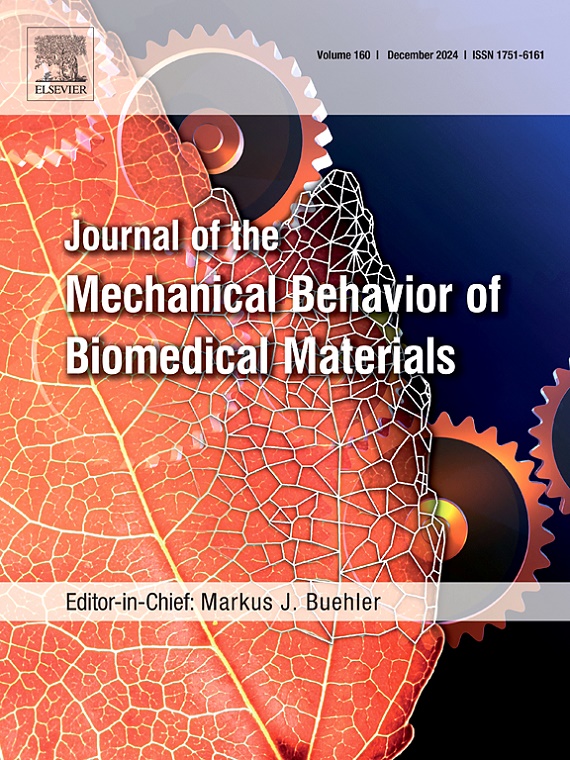Evaluation of boundary conditions for predicting femoral bone-implant mechanics during gait in the absence of comprehensive medical imaging
IF 3.3
2区 医学
Q2 ENGINEERING, BIOMEDICAL
Journal of the Mechanical Behavior of Biomedical Materials
Pub Date : 2025-01-30
DOI:10.1016/j.jmbbm.2025.106908
引用次数: 0
Abstract
Finite element analysis (FEA) is nowadays a pivotal tool in orthopaedic research for personalized virtual surgery planning. Despite its widespread use, a comprehensive evaluation of the effect of boundary conditions on the simulation of physiological mechanics in implanted bone is currently lacking. This study assesses the impact of boundary conditions and femur geometry on predicted femur mechanics. It focuses on an isolated implanted femur, partially imaged, from a paediatric patient with femoral varus who underwent a proximal femoral osteotomy. By employing FEA of the femur under motion with loading scenarios informed by personalized neuromusculoskeletal modelling, this study evaluated implant and bone mechanics across three femur model configurations (full-femur, proximal half-femur, and distally synthesized full-femur) with two boundary condition approaches (biomechanical and fixed distal). The biomechanical boundary condition was validated against the gold standard inertia relief method for the natural femur and thereafter exploited as the benchmark against the other implanted femur model configurations. The distally synthesized full-femur with biomechanical boundary conditions performed best and closely predicted bone-implant micromotion (R2 = 0.99, nRMSE = 0.3%), risk of implant yield (<1% variance from the benchmark model), and interfragmentary movement (R2 = 1, nRMSE = 6%). The half-femur model with biomechanical boundary conditions overpredicted the risk of yield and interfragmentary movements by 17% and 15.8%, respectively. The fixed distal constraint method significantly overestimated the risk of implant yield in both half and synthesized full-femur models by 157% and 170%, respectively. These findings underscore the critical importance of selecting appropriate boundary conditions in the FEA of implanted femur models and advocate for the synthesis of the missing portion of the femur coupled with the biomechanical boundary conditions for more accurate predictions of bone and implant mechanics. Such insights are expected to enhance the physiological plausibility and reliability of orthopaedic research and clinical practices, especially when managing proximal femoral osteotomies.

求助全文
约1分钟内获得全文
求助全文
来源期刊

Journal of the Mechanical Behavior of Biomedical Materials
工程技术-材料科学:生物材料
CiteScore
7.20
自引率
7.70%
发文量
505
审稿时长
46 days
期刊介绍:
The Journal of the Mechanical Behavior of Biomedical Materials is concerned with the mechanical deformation, damage and failure under applied forces, of biological material (at the tissue, cellular and molecular levels) and of biomaterials, i.e. those materials which are designed to mimic or replace biological materials.
The primary focus of the journal is the synthesis of materials science, biology, and medical and dental science. Reports of fundamental scientific investigations are welcome, as are articles concerned with the practical application of materials in medical devices. Both experimental and theoretical work is of interest; theoretical papers will normally include comparison of predictions with experimental data, though we recognize that this may not always be appropriate. The journal also publishes technical notes concerned with emerging experimental or theoretical techniques, letters to the editor and, by invitation, review articles and papers describing existing techniques for the benefit of an interdisciplinary readership.
 求助内容:
求助内容: 应助结果提醒方式:
应助结果提醒方式:


